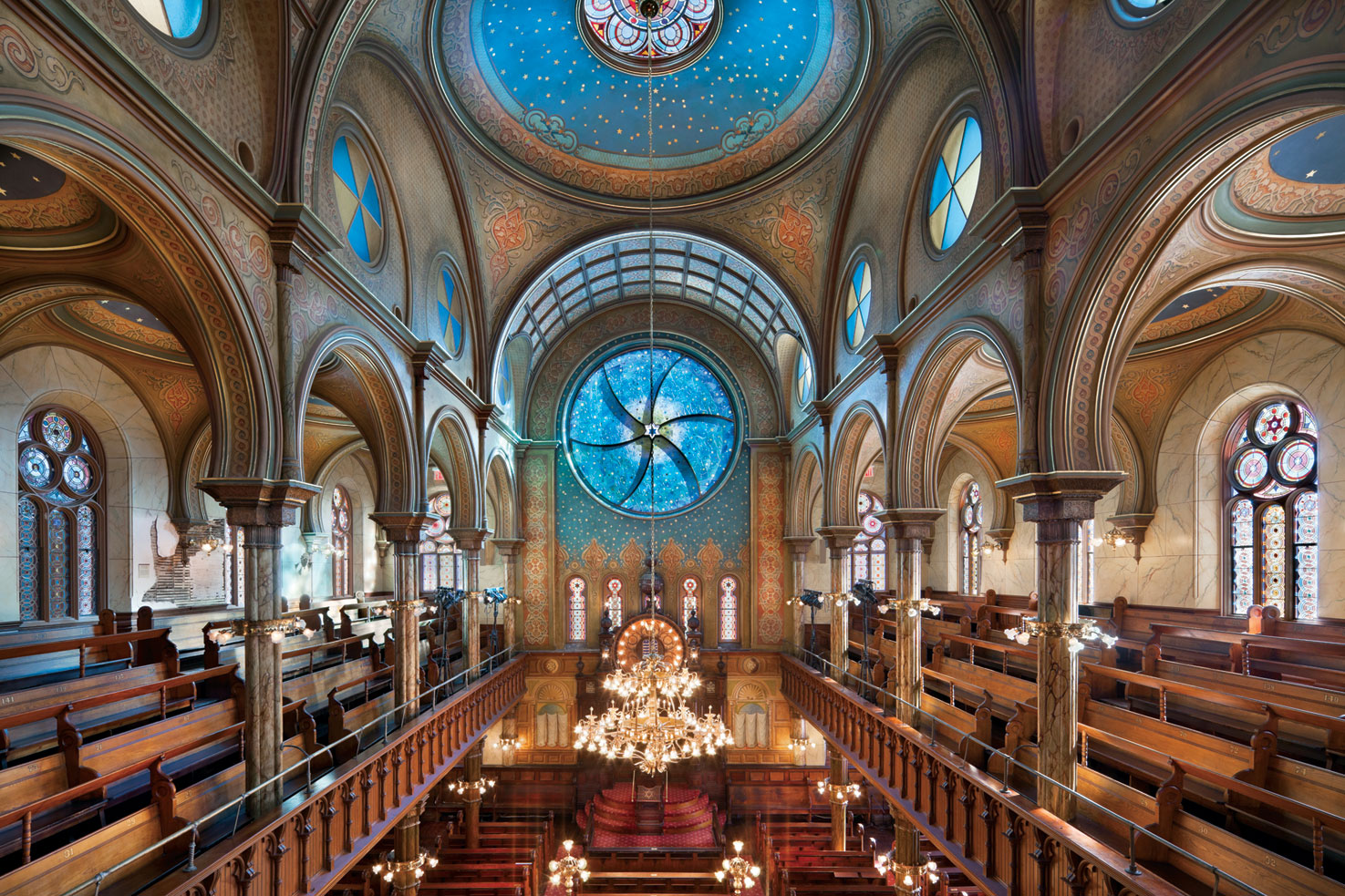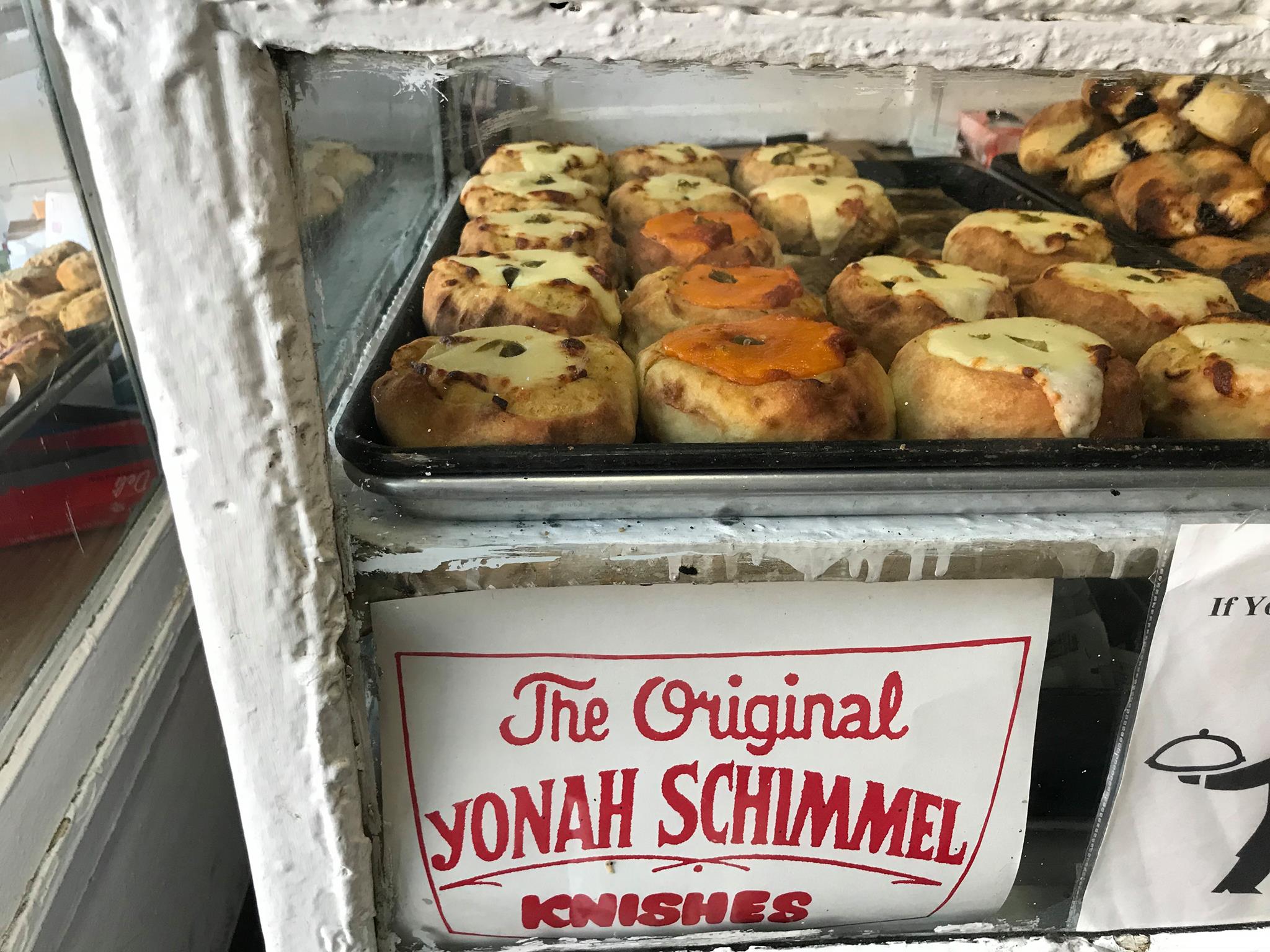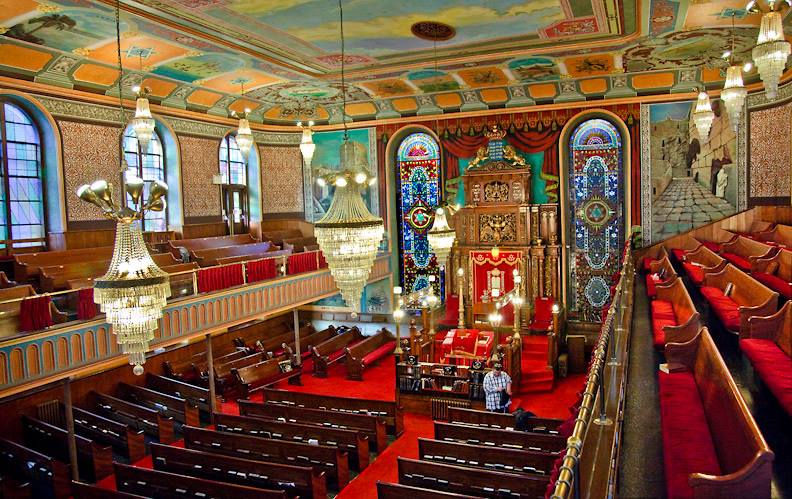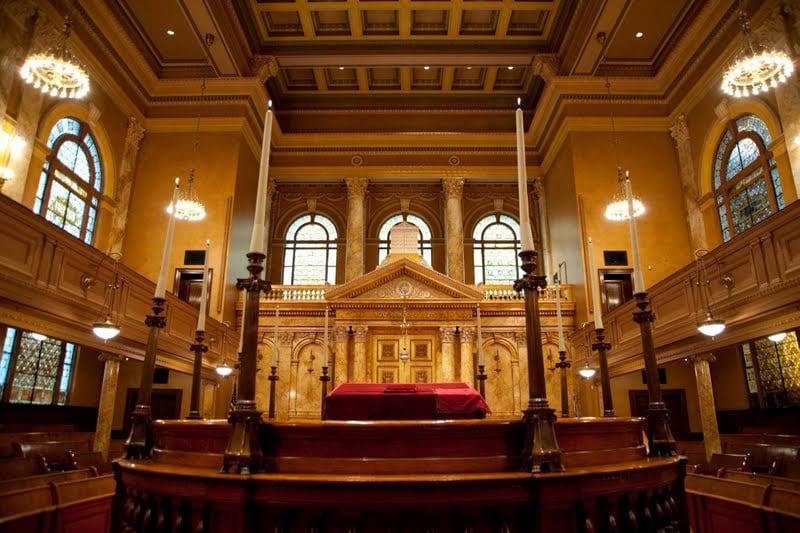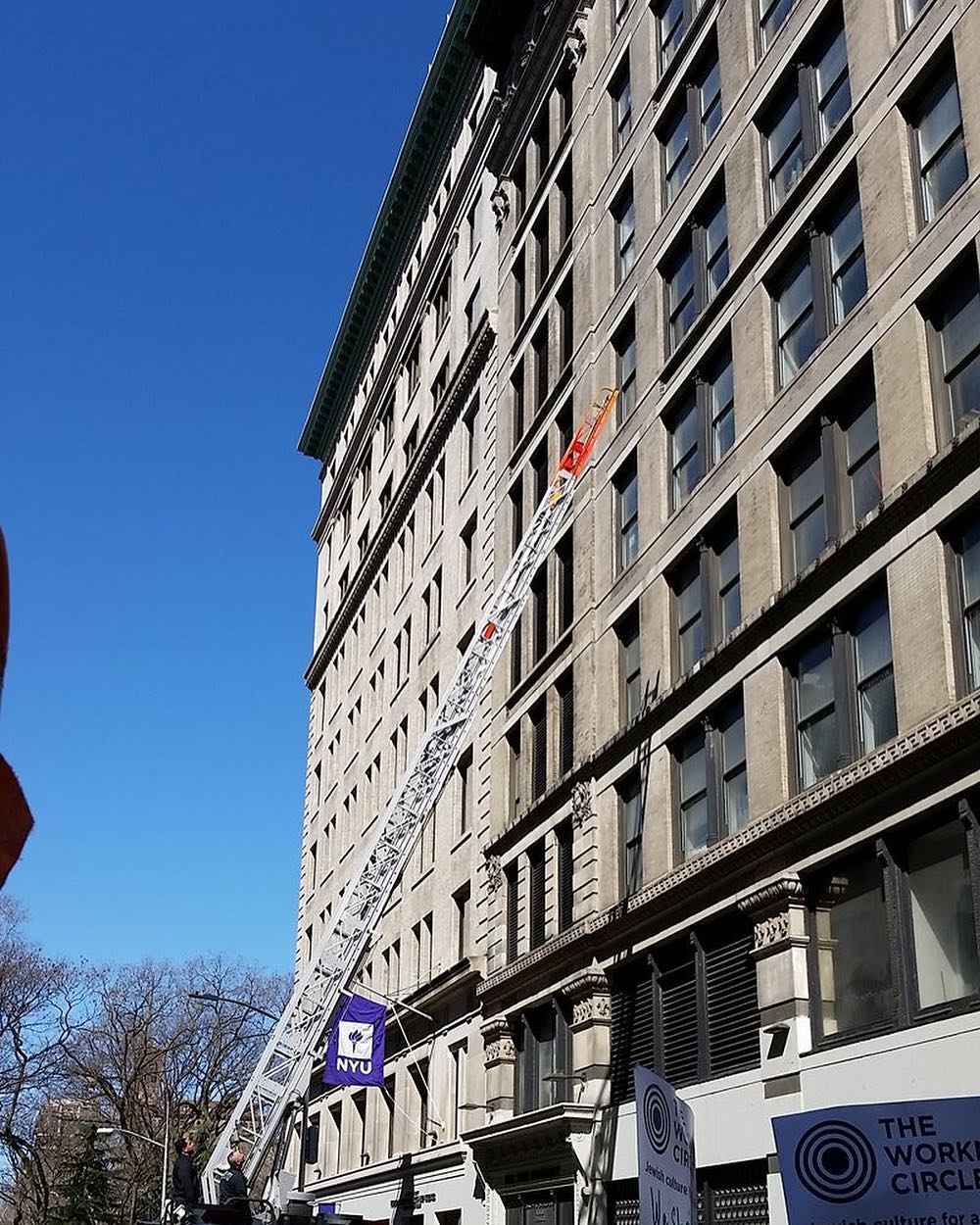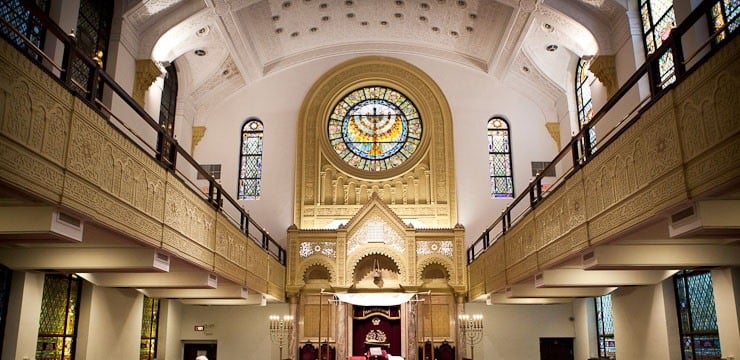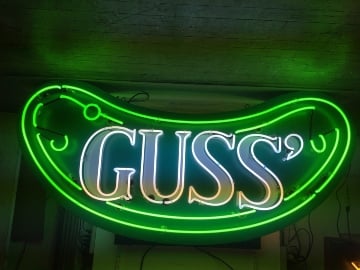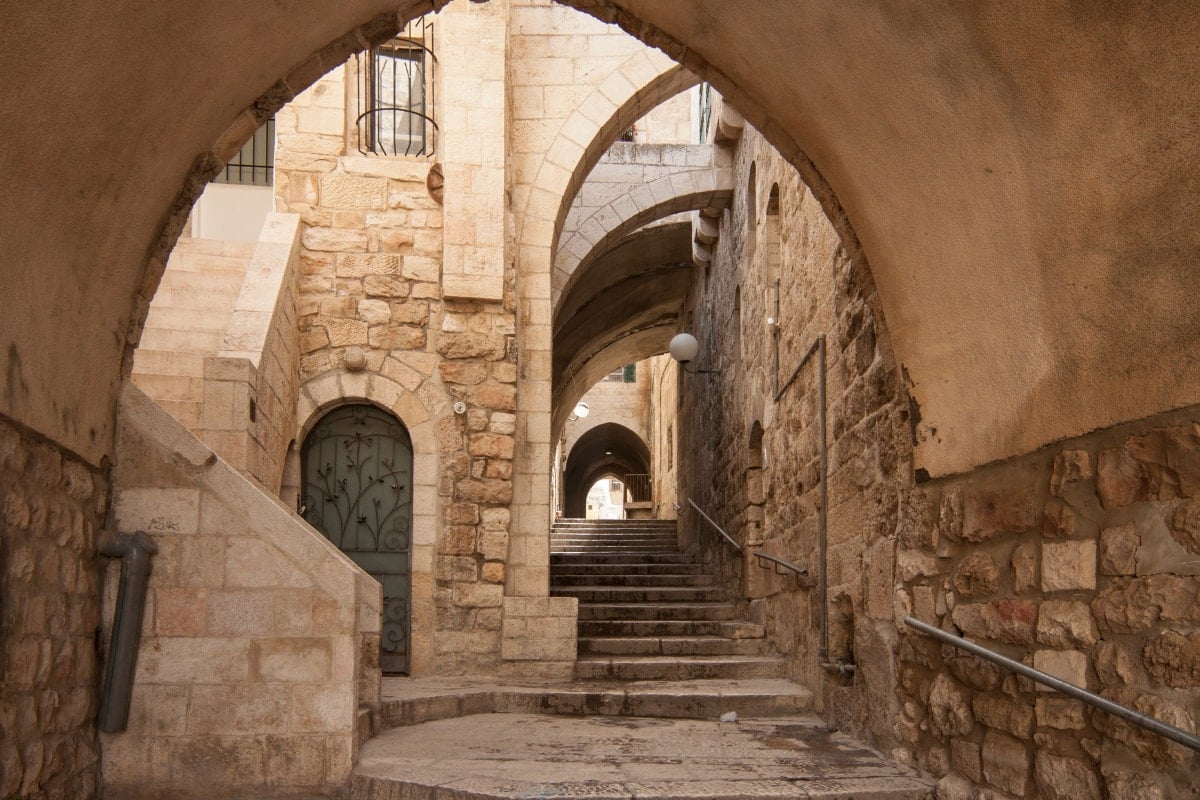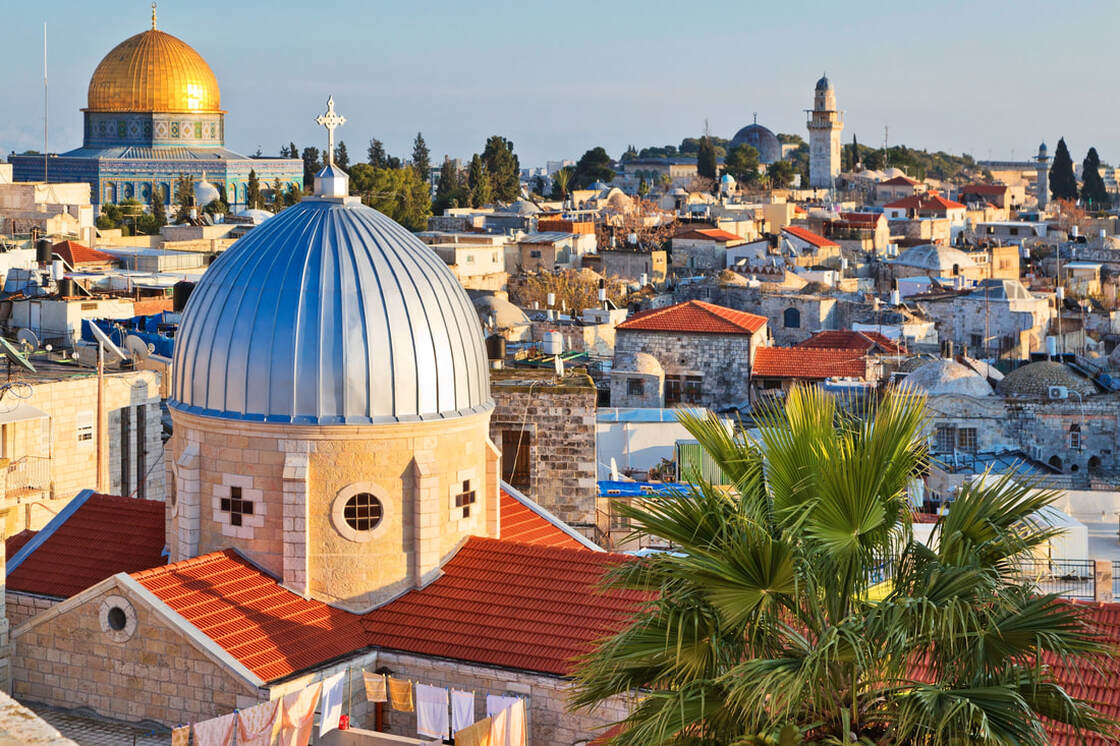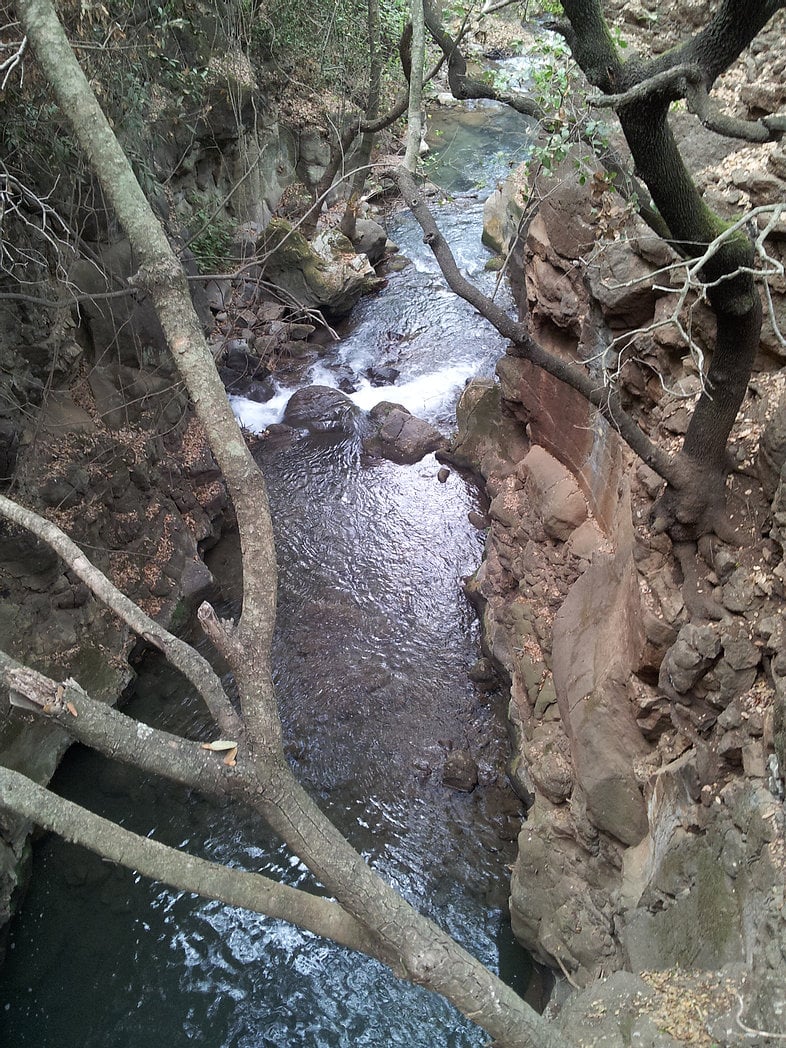Initially opened in 1887, The Museum at Eldridge Street is located in the Eldridge Street Synagogue, a magnificent National Historic Landmark. Today it is one of the only remaining historical sights related to early eastern European migration to America. The Museum offers year-round tours, exhibitions, cultural events and educational programs; detailing Jewish immigrant life and its historical roots to New York.
Archives: Directory listings
Directory listings
Yonah Schimmel Knish Bakery
Located in the Lower East Side, Manhattan, Yonah Schimmel’s Knish Bakery has been in operation since 1910. Serving Knish, an Eastern European snack food, these handmade delicacies are a must for anyone’s visit to New York. Schimmel’s has served Knish to many notable guests throughout its history, such as Eleanor Roosevelt, Barbara Streisand and Woody Allen, clearly indicating its popularity as one of New York’s top Jewish bakeries.
Lower East Side Jewish Conservancy
The Lower East Side Conservancy, also known as The Lower East Side Jewish Conservancy (LESJC), is an educational and advocacy organization, created in 1998 to preserve the synagogues and cultural heritage of the Lower East Side, America’s most famous immigrant neighborhood, and present them to the public. Through the organization’s efforts, many have been designated as historic landmarks, and have been listed on New York State and National Registers. In 2000, the Conservancy assisted in designating a 32 – block area as a historic district.
Their mission is accomplished through quality touring programs, both private, public, and educational, which showcase the Lower East Side’s landmarks, history and people. As the only non-profit organization dedicated solely to the historic preservation of the Lower East Side’s sacred sites, the Conservancy has formed relationships with the leaders of all of the synagogues remaining in this iconic immigrant neighborhood.
In addition to the Lower East Side, the LESJC provides tours of other New York neighborhoods of Jewish importance, such as Jewish Harlem, the Upper West Side, and Williamsburg, Brooklyn.
The conservancy aimed to transform the old Beth Hamedrash Hagadol into a visitors center for the Lower East Side with educational programs and gallery space, but the building was destroyed in 2017 with a fire, and was torn down in 2019.
Congregation Shearith Israel
The Congregation Shearith Israel – often called The Spanish and Portuguese Synagogue – is the oldest Jewish congregation in the United States. It was established in 1654 in New Amsterdam by Jews who arrived from Dutch Brazil. Until 1825, when Jewish immigrants from Germany established a congregation, it was the only Jewish congregation in New York City.
The Orthodox synagogue, which follows the Sephardic liturgy, is located on Central Park West at 70th Street, on the Upper West Side of Manhattan. The congregation has occupied its current Neoclassical building since 1897.
The first group of Spanish and Portuguese Jews were twenty-three refugees from Dutch Brazil, who arrived in New Amsterdam in September 1654. After being initially rebuffed by anti-Semitic Director of New Netherland Peter Stuyvesant, Jews were given official permission to settle in the colony in 1655. This year marks the founding of the Congregation Shearith Israel. Although they were allowed to stay in New Amsterdam, they faced discrimination and were not given permission to worship in a public synagogue for some time (throughout the Dutch period and into the British). The Congregation did, however, make arrangements for a cemetery beginning in 1656.
It was not until 1730 that the Congregation was able to build a synagogue of its own; it was built on Mill Street (now William Street) in lower Manhattan. The Mill Street synagogue was said to have had access to a nearby spring which it used as a mikveh for ritual baths. Before 1730, as noted on a 1695 map of New York, the congregation worshipped in rented quarters on Beaver Street and subsequently on Mill Street. Since 1730 the Congregation has worshipped in five synagogue buildings; the current building was extensively refurbished in 1921.
As the American Reform Judaism made headway in the late 19th century, many rabbis critical of the Reform movement looked for ways to strengthen traditional synagogues. Shearith Israel, and its rabbi, Henry Pereira Mendes, were at the fore of these efforts. Rabbi Mendes cofounded the American Jewish Theological Seminary (JTS) in 1886, in order to train traditional rabbis. The school held its first classes at Shearith Israel. In JTS’ earliest days, it taught and researched rabbinics similarly as was done in traditional yeshivas, in contrast to the Reform Hebrew Union College.
Twelve years later, in 1896, Mendes was acting president of JTS. He promoted the formation of the Union of Orthodox Jewish Congregations of America (commonly known as the OU, the Orthodox Union). This synagogue umbrella group provided an alternative to the Reform movement’s Union of American Hebrew Congregations.
As JTS grew, it needed better financing and a full-time head. The seminary moved to its own building, and Mendes was replaced by Solomon Schechter. However, Schechter developed a less traditional approach, which became the basis for Conservative Judaism (called Masorti outside North America). Initially there was considerable cooperation between the Orthodox and Conservative groups but, over time, the divide became clearer.
Schechter formed the United Synagogue of America (now the United Synagogue of Conservative Judaism, or USCJ) to promote synagogue affiliation with his conservative ideology.
Shearith Israel remained aligned with the Orthodox tradition. It eventually repudiated its association with JTS. In a sense, Shearith Israel helped create three of the largest and most significant Jewish religious organizations in the United States: JTS, the OU, and USCJ. Shearith Israel remains a member only of the Orthodox Union.
Triangle Shirtwaist Factory
The deadliest disaster to strike New York until the 9/11 attacks, 90 years later, was the Triangle Shirtwaist Factory disaster. The Brown Building stands as a monument to the 146 Jewish and Italian immigrants killed by a massive fire and locked doors and is both a National Historic Landmark and a New York City Landmark.
Currently, The Remember the Triangle Fire Coalition educates the public about the Triangle Shirtwaist Factory fire through its ongoing projects, educational outreach, and its social media presence. It also supports the annual remembrance activities on the anniversary of the fire on March 25 and is in the works of establishing a permanent memorial for those who lost their lives on the site.
Congregation Ohab Zedek
Congregation Ohab Zedek, or OZ, as it is fondly known, is more than just a synagogue. Under the leadership of Rabbi Allen Schwartz, the Shul is known for its open doors and big heart. OZ has broad ties with the surrounding Jewish community and its Upper West Side neighborhood as a whole. A random visitor could easily encounter an up and coming scholar from Israel, or members of the local fire station. It is an informal, comfortable, inclusive community.
OZ is a modern Orthodox congregation, but any individual is welcome, regardless of background or means. It is a Shul of interlocking communities–young families who find a relaxed setting on Shabbos morning to introduce their toddlers to services; singles, who famously crowd the steps on Friday night; and seniors, many of whom have been members of OZ for decades. It is home to those tentatively exploring Judaism as well as the most learned, who are stimulated by a broad array of lecturers and classes.
Guss’ Pickles
Guss’ Pickles was founded by a Polish immigrant, Isidor Guss. Guss arrived in New York in 1910, and like hundreds of thousands of other Jewish immigrants, settled in the Lower East Side. Clustered in the “pickle district” of Essex and Ludlow streets, early 20th century pickle vendors gave birth to what would be known as “New York style” pickles.
Guss at first worked for L. Hollander and Sons, before opening his own store. At the time, the neighborhood was teeming with 80 other pickle shops. However, immigration restrictions, a ban on pushcarts and the steady economic decline of the Lower East Side felled almost all of these shops.
Guss’ Pickles withstood the economic difficulty and now remains as the last store from the days of the Essex Street empire. In 1979, Harry Baker and his partner Burt Blitz took over Guss’ Pickles. Through the 1980s and into the 2000s, Baker and his son Tim ran the store.
Guss’ Pickles was featured in the film Crossing Delancey(1988) Guss’ Pickles ships gallon size nationwide at their official web-site GussPickles.com. In June 2017 Guss’ Pickles opened a new store in Brooklyn. It is inside the Dekalb Market Hall.
Old and New Jerusalem Full-Day Tour Operated by Bein Harim Ltd
Take in the panoramic views of Jerusalem from the top of Mount Scopus. Then, travel down the mount passing the Biblical Garden of Gethsemane, Church of All Nations, and Kidron Valley that holds monumental Jewish tombs. In the Jewish Quarter, we see the Cardo; the Byzantine-era main street of Jerusalem. We stop at the sacred Western Wall to place a prayer note between the ancient stones of the wall. The tour follows part of the Via Dolorosa to the stunning Church of the Holy Sepulchre. Here, we see the site of Christ’s crucifixion and his burial tomb. After a lunch break and walk through the Old City bazaar we travel to new Jerusalem. Driving through the modern city we reach Yad VaShem Holocaust Museum. The museum’s exhibits include authentic artifacts, original documents, photos, and video testimonials of Holocaust survivors. Hotel pick-up is additionally offered and available to anyone on the tour.
Ilan Bloch
Ilan Bloch heads Accord Tours. He is an Israeli Ministry of Tourism qualified tour guide (and a graduate of the Ministry of Tourism Islam and Islamic tourism, and Christianity and Christian tourism, specialization courses), with many years of experience.
He has an MA in Education and a Teaching Diploma.
He was raised in Melbourne, Australia, and today lives in Jerusalem with his wife and twins.
On behalf of Accord Tours, he will be very pleased to assist you with all of your travel and tourism needs during your stay. In the meantime, please feel free to sign up to our free newsletter.
Gary the Guide
GaryTheGuide: Personalized Tours Led By a Local
A truly personalized visit to Israel starts with GaryTheGuide. Gary, a longtime local originally from Chicago, has been leading private guided tours for decades. Led by his vast knowledge of history and archeology, Gary helps Israel come alive for every traveler. He leads custom tours with itineraries that take you through Jerusalem, the Golan Heights, the Galilee, and the Dead Sea. His enthusiastic approach keeps everyone of all ages engaged and interested in history, politics, and spirituality within Israel.
Gary’s storytelling-driven tours offer a one-of-a-kind way to see Israel’s most culturally and religiously significant destinations. His ability to retell some of history’s most complex stories in an easy-to-understand manner is great for families with children. As you’re exploring Zedekiah’s Cave or wandering through the Jewish Quarter, Gary shares personal stories and locals-only tips. His one and two-day itineraries are offered in English and can be personalized based on your interests.
Travelers can expect a lively and often humorous adventure discovering the best of Israel with GaryTheGuide at the helm. With countless five-star reviews, Gary is passionate about sharing the beauty of Israel to each person who comes along on one of his unforgettable tours. Whether you’re religious or secular, a tour with Gary offers a terrific introduction to the land of Israel and its multifaceted people.
